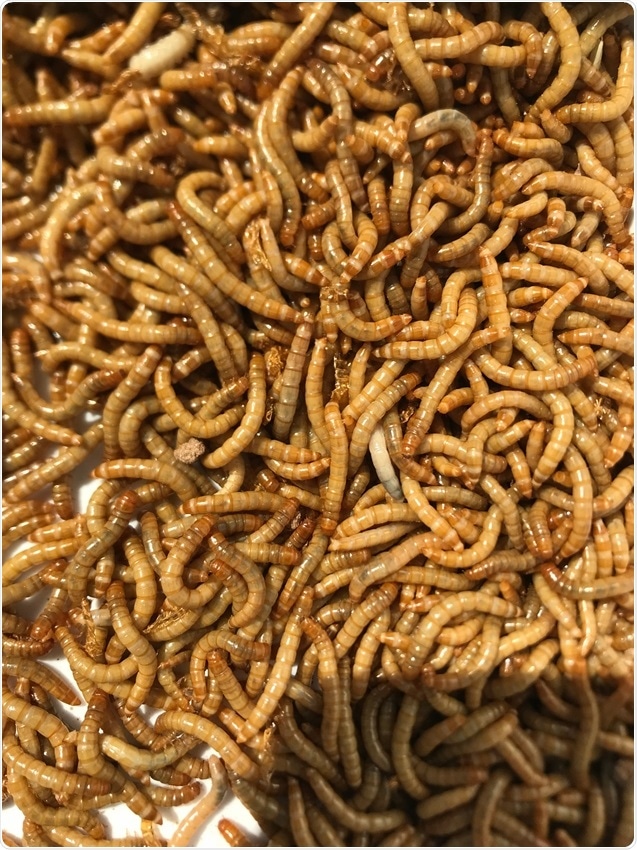The global food demands are increasing at a tremendous rate. Now, a study headed by Indiana University-Purdue University Indianapolis (IUPUI) has discovered new evidence that a formerly overlooked insect, called the yellow mealworm, could be used as an alternative source of protein.

The yellow mealworm species Tenebrio molitor. An IUPUI-led study finds the insect could serve as a good alternate protein source in agriculture. Image Credit: Photo by Ti Eriksson, Beta Hatch.
The study is based on a new investigation of the genome found in Tenebrio molitor—the mealworm species. This gene analysis was headed by Christine Picard, an associate professor of biology and director of the Forensic and Investigative Sciences program at the School of Science in IUPUI.
The study was published in the Journal of Insects as Food and Feed on August 31st, 2020.
Human populations are continuing to increase, and the stress on protein production is increasing at an unsustainable rate, not even considering climate change.”
Christine Picard, Associate Professor of Biology, School of Science, Indiana University-Purdue University Indianapolis
Picard’s laboratory targets the use of insects to deal with the global food demand.
Performed in association with Beta Hatch Inc., the study found that the yellow mealworm—which is historically a pest—can offer advantages in a broad range of agriculture applications. The insect can be utilized as an alternative protein source for animals, such as fish, and its waste can even be used as an organic fertilizer.
Along with her collaborators, Picard used the 10X Chromium linked-read technology to sequence the genome of the yellow mealworm. The findings will assist those who currently wish to use the DNA and improve the yellow mealworm for large-scale consumption and production.
The latest technology combines the best of two sequencing techniques to create a consistent genome sequence.
Insect genomes are challenging, and the longer sequence of DNA you can generate, the better genome you can assemble.”
Christine Picard, Associate Professor of Biology, School of Science, Indiana University-Purdue University Indianapolis
She added that the mealworm has—and will have—a broad range of applications.
Mealworms, being insects, are a part of the natural diet of many organisms. Fish enjoy mealworms, for example. They could also be really useful in the pet food industry as an alternative protein source, chickens like insects -- and maybe one day humans, too, because it's an alternative source of protein.”
Christine Picard, Associate Professor of Biology, School of Science, Indiana University-Purdue University Indianapolis
Picard further added that the team has now planned to investigate the kind of factors that control certain biological processes of yellow mealworms to harness data that might prove useful to commercialize these insects.
Source:
Journal reference:
Eriksson, T., et al. (2020) The yellow mealworm (Tenebrio molitor) genome: a resource for the emerging insects as food and feed industry. Journal of Insects as Food and Feed. doi.org/10.3920/jiff2019.0057